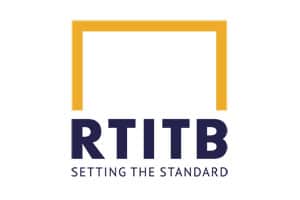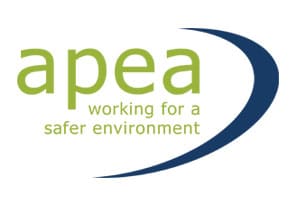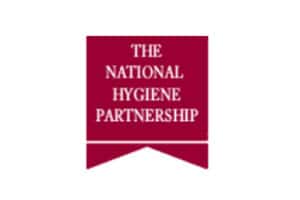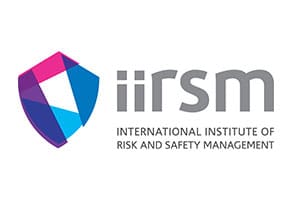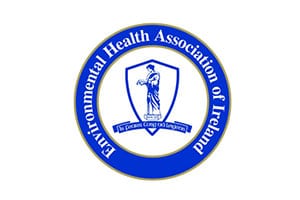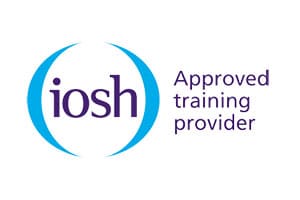September is Emergency Preparedness Month. No business is immune to emergencies, whether it’s a medical emergency, fire, power cut or severe weather alert. That’s why it’s essential to have a comprehensive emergency plan in place.
The importance of emergency planning in the workplace…
When it comes to workplace safety, prevention is always better than dealing with the aftermath of an emergency. By having a well-thought-out emergency plan, you can minimize the risks and impacts of various emergencies. A comprehensive emergency plan not only ensures the safety of your employees but also protects your organization’s reputation and assets.
To start, it’s crucial to conduct a thorough risk assessment to identify potential hazards and vulnerabilities specific to your workplace. This assessment should consider factors such as location, type of business, and the number of employees. By understanding the risks, you can design a plan tailored to your organization’s needs.
Once you have identified the potential risks, it’s time to develop an emergency response team. This team should consist of individuals who are trained and knowledgeable in emergency procedures. Their role is to coordinate and execute the emergency plan effectively. Establish clear roles and responsibilities for each team member, ensuring everyone knows their tasks in an emergency situation.
Common workplace emergencies…
Workplace emergencies can come in various forms, and it’s essential to be prepared for all possible scenarios. Some of the most common workplace emergencies include fires, severe weather events, medical emergencies, hazardous material spills, and security threats. Each type of emergency requires a specific response strategy, and your emergency plan should address them comprehensively.
Fires, for example, are a significant concern for workplace safety. Implementing fire prevention measures such as regular maintenance of fire alarms and fire extinguishers, as well as conducting fire drills, can significantly reduce the risk of fire-related accidents. Additionally, ensuring that employees know how to use fire extinguishers and evacuate safely is crucial.
Medical emergencies are another common occurrence in the workplace. Having employees trained in first aid and CPR can make a significant difference in saving lives during critical situations. Provide access to first aid kits and ensure that they are regularly checked and replenished. Implementing an emergency notification system that alerts medical professionals and emergency services can also be a lifesaver.
Creating an emergency response team…
Having a dedicated emergency response team is vital for the successful implementation of your emergency plan. The team should consist of individuals who have the necessary skills and training to handle emergencies effectively. These individuals should be trained in first aid, CPR, fire safety, and any other relevant emergency response training.
When selecting team members, consider individuals from various departments to ensure representation from different areas of expertise. In addition to their primary roles, these team members should receive ongoing training and refresher courses to stay up to date with the latest emergency procedures.
The emergency response team should have clear roles and responsibilities assigned to each member.
Emergency evacuation procedures…
Evacuation procedures are a critical component of any emergency plan. In the event of a fire or any other emergency that requires immediate evacuation, having a well-established evacuation plan can save lives.
Start by clearly marking escape routes and exits throughout your workplace. These should be easily visible and unobstructed at all times. Regularly inspect and maintain emergency exit signs to ensure their effectiveness.
Next, establish assembly points outside the building where employees can gather after evacuating. This allows for a headcount and ensures that everyone is accounted for. Make sure that the assembly points are far enough from the building to ensure everyone’s safety.
Emergency communication methods…
Effective communication is essential during emergencies. Having reliable communication methods in place can ensure that critical information reaches the right people at the right time.
One of the most common communication methods is an emergency notification system. This can be a combination of alarms, loudspeakers, and text/email alerts that can quickly disseminate information to all employees. These systems should be regularly tested to ensure their functionality.
In addition to mass communication methods, it’s crucial to establish a communication chain of command. This ensures that information flows smoothly from the emergency response team to employees and vice versa. Designate individuals responsible for communicating updates and instructions during an emergency. Ensure that backup communication methods are available in case primary systems fail.
Training employees for emergency situations…
No emergency plan is complete without proper employee training. Training employees on emergency procedures and protocols can mean the difference between a successful response and chaos.
Start by providing general emergency preparedness training to all employees. This should cover basic evacuation procedures, first aid, and emergency communication methods.
Conducting drills and testing the emergency plan…
Regular drills and testing are crucial for evaluating the effectiveness of your emergency plan. This allows you to identify any gaps or areas for improvement and make necessary adjustments.
Start by conducting tabletop exercises, where team members discuss and simulate emergency scenarios. This allows for a thorough examination of the emergency plan and an opportunity to identify weaknesses.
In today’s fast-paced world, workplace safety and security should be a top priority for every organization. No business is immune to emergencies, whether it’s a natural disaster, a medical emergency, or a security threat. That’s why it’s essential to have a comprehensive emergency plan in place.
At [Brand Name], we understand the importance of keeping your employees, customers, and assets safe. In this article, we will guide you on how to be prepared for any potential emergency and create a safe and secure workplace environment.
From conducting risk assessments to developing evacuation procedures, we will provide you with practical tips and strategies to ensure that your organization is ready to respond effectively in times of crisis. We will also address key factors such as communication protocols, employee training, and having the right emergency supplies on hand.
No one wants to think about worst-case scenarios, but being proactive and prepared can make all the difference. Let us help you create a robust emergency plan that instills confidence in your team and promotes a culture of safety. Together, we can ensure that your workplace is a secure haven for everyone.
When it comes to workplace safety, prevention is always better than dealing with the aftermath of an emergency. By having a well-thought-out emergency plan, you can minimize the risks and impacts of various emergencies. A comprehensive emergency plan not only ensures the safety of your employees but also protects your organization’s reputation and assets.
To start, it’s crucial to conduct a thorough risk assessment to identify potential hazards and vulnerabilities specific to your workplace. This assessment should consider factors such as location, type of business, and the number of employees. By understanding the risks, you can design a plan tailored to your organization’s needs.
Once you have identified the potential risks, it’s time to develop an emergency response team. This team should consist of individuals who are trained and knowledgeable in emergency procedures. Their role is to coordinate and execute the emergency plan effectively. Establish clear roles and responsibilities for each team member, ensuring everyone knows their tasks in an emergency situation.
Workplace emergencies can come in various forms, and it’s essential to be prepared for all possible scenarios. Some of the most common workplace emergencies include fires, severe weather events, medical emergencies, hazardous material spills, and security threats. Each type of emergency requires a specific response strategy, and your emergency plan should address them comprehensively.
Fires, for example, are a significant concern for workplace safety. Implementing fire prevention measures such as regular maintenance of fire alarms and fire extinguishers, as well as conducting fire drills, can significantly reduce the risk of fire-related accidents. Additionally, ensuring that employees know how to use fire extinguishers and evacuate safely is crucial.
Medical emergencies are another common occurrence in the workplace. Having employees trained in first aid and CPR can make a significant difference in saving lives during critical situations. Provide access to first aid kits and ensure that they are regularly checked and replenished. Implementing an emergency notification system that alerts medical professionals and emergency services can also be a lifesaver.
Having a dedicated emergency response team is vital for the successful implementation of your emergency plan. The team should consist of individuals who have the necessary skills and training to handle emergencies effectively. These individuals should be trained in first aid, CPR, fire safety, and any other relevant emergency response training.
When selecting team members, consider individuals from various departments to ensure representation from different areas of expertise. In addition to their primary roles, these team members should receive ongoing training and refresher courses to stay up to date with the latest emergency procedures.
The emergency response team should have clear roles and responsibilities assigned to each member. This includes designating a team leader who will be responsible for coordinating with emergency services and managing the overall response efforts. Regular meetings and drills should be conducted to ensure that the team members are well-prepared and familiar with their roles.
Evacuation procedures are a critical component of any emergency plan. In the event of a fire or any other emergency that requires immediate evacuation, having a well-established evacuation plan can save lives.
Start by clearly marking escape routes and exits throughout your workplace. These should be easily visible and unobstructed at all times. Regularly inspect and maintain emergency exit signs to ensure their effectiveness.
Next, establish assembly points outside the building where employees can gather after evacuating. This allows for a headcount and ensures that everyone is accounted for. Make sure that the assembly points are far enough from the building to ensure everyone’s safety.
Effective communication is essential during emergencies. Having reliable communication methods in place can ensure that critical information reaches the right people at the right time.
One of the most common communication methods is an emergency notification system. This can be a combination of alarms, loudspeakers, and text/email alerts that can quickly disseminate information to all employees. These systems should be regularly tested to ensure their functionality.
In addition to mass communication methods, it’s crucial to establish a communication chain of command. This ensures that information flows smoothly from the emergency response team to employees and vice versa. Designate individuals responsible for communicating updates and instructions during an emergency. Ensure that backup communication methods are available in case primary systems fail.
No emergency plan is complete without proper employee training. Training employees on emergency procedures and protocols can mean the difference between a successful response and chaos.
Start by providing general emergency preparedness training to all employees. This should cover basic evacuation procedures, first aid, and emergency communication methods. It’s important to ensure that new employees receive this training as part of their onboarding process.
For more specific roles, such as members of the emergency response team, specialized training should be provided. This can include advanced first aid, CPR, and fire safety training. Regularly conduct refresher courses and drills to keep employees familiar with emergency procedures.
Regular drills and testing are crucial for evaluating the effectiveness of your emergency plan. This allows you to identify any gaps or areas for improvement and make necessary adjustments.
Start by conducting tabletop exercises, where team members discuss and simulate emergency scenarios. This allows for a thorough examination of the emergency plan and an opportunity to identify weaknesses.
After tabletop exercises, move on to conducting actual drills that simulate real-life emergency situations. This can include fire drills, evacuation drills, and medical emergency simulations. Evaluate the response of employees and the effectiveness of the emergency plan during these drills.
Having the right emergency supplies and equipment on hand is essential for a safe and secure workplace. These supplies can include first aid kits, fire extinguishers, emergency lighting, and personal protective equipment.
Regularly inspect and replenish these supplies to ensure they are in good working condition. Train employees on how to use the equipment properly and provide clear instructions on when and how to access them during emergencies.
Reviewing and updating the emergency plan…
An emergency plan is not a one-and-done document. Regular review and updates are necessary to ensure its effectiveness. As your organization changes and grows, so do the potential risks and vulnerabilities.
Schedule regular reviews of the emergency plan, ideally at least once a year. This allows you to identify any changes in your workplace, such as new equipment, renovations, or changes in personnel, that may require updates to the emergency plan.

